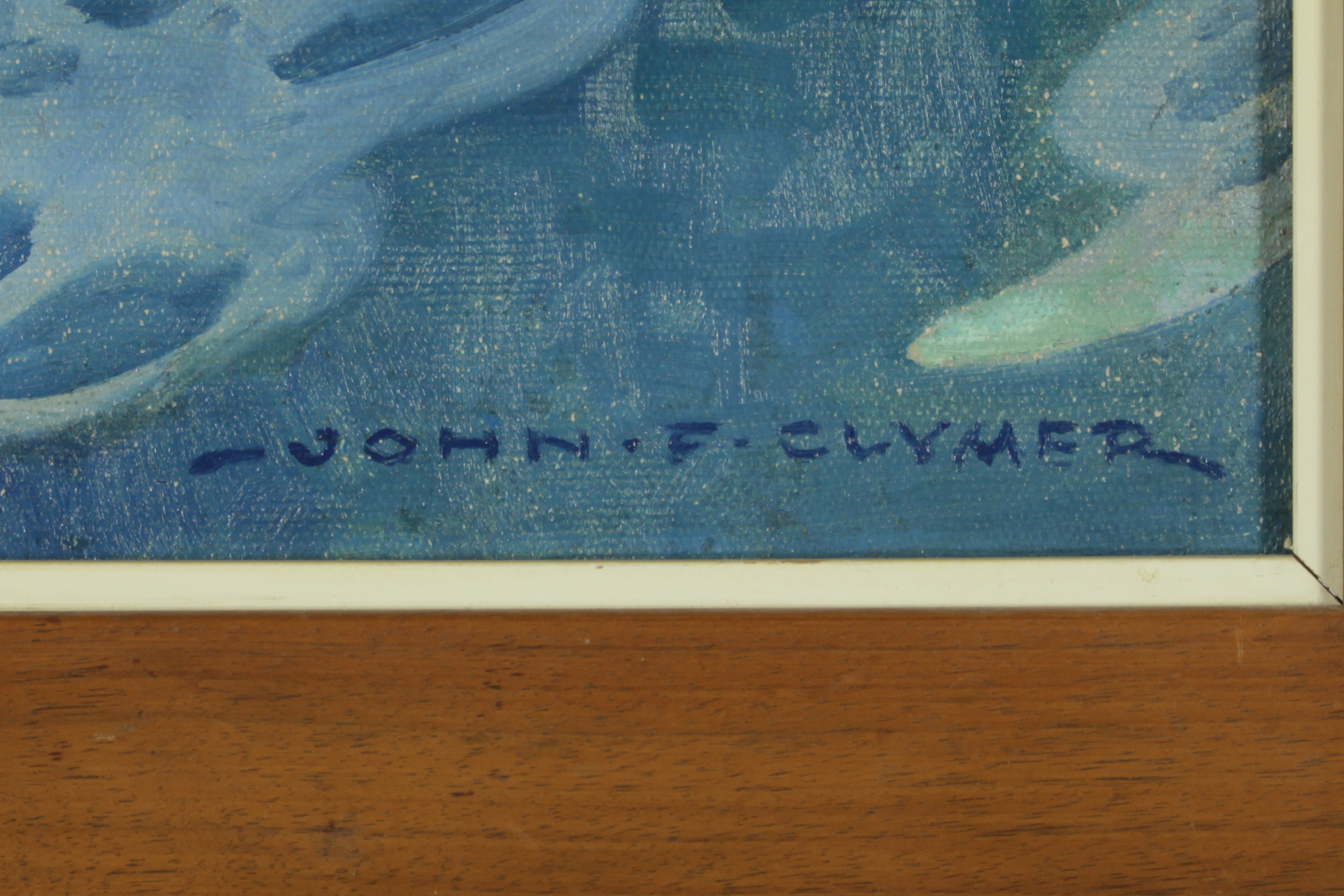John Ford Clymer (American 1907-1989)
Empress of Asia
oil on canvas, signed lower right "John F. Clymer"
Size: 24 ½ x 30 ¼ in (with frame 29 x 35 in)
J19205
uno@langmann.com
604 736 8825 or 1 800 730 8825
The Empress of Asia was an ocean liner, built by Fairfield Shipbuilding and Engineering at Govan Scotland and owned by Canadian Pacific Steamships Ltd.. She was a steam turbine ship with four steam turbines, 6 double boilers and 4 single boilers with a speed of 20 knots. Launched in 1912, she completed her maiden voyage in May of 1913 and except for assignments during both World Wars, she spent her entire commercial life transporting cargo and passengers from Asia to British Columbia, Canada. During her commercial life she set two world records, in 1914 for a single day’s distance and for crossing the Pacific in record time.
During World War I the Empress of Asia became an auxiliary cruiser and was deployed in Asia and the Middle East and later served as a troop carrier on the Atlantic.
Between the World Wars in 1937, the Empress of Asia and the Empress of Canada evacuated civilians from Shanghai during the second Sino-Japanese War.
During World War II, the ship was converted again into a troop carrier in January of 1941 and left Vancouver the following month for Liverpool. The Empress of Asia carried troops from Halifax to Liverpool supporting the Allied campaign in North Africa.
The final voyage of the Empress of Asia began in November 1941, when the ship sailed from Liverpool carrying troops and supplies and bound for Africa, Bombay and Singapore. She was one of five ships carrying troops and materials to reinforce Singapore against the rapid advancement of Japanese troops. The convoy came under aerial attack on February 4 but sustained only minor damages. The next day however, while in convoy approaching Singapore, the Empress of Asia and the convoy were again attacked. Nine Japanese bombers focused their attack on the Empress of Asia, and she was sunk. Much of the crew were able to escape onto nearby ships, and only 16 lost their lives.
When Singapore fell to Japan just 10 days later most of the deck crew and engine crew managed to escape and were repatriated. Most of the catering crew serving at the Singapore General Hospital after the loss of the Empress of Asia were interned as prisoners of war. One of the groups that escaped was led by Leonard Johnston, the chief mate on the Empress of Asia. He took charge of 40 other crew and led them to safety in Fremantle, Australia. The journey included three inter-island steamers to get them to Sumatra, then a 100-mile hike over the island to a ferry to get to Java and then on to what is now the city of Jakarta in Indonesia and then onto Australia on a flat bottom riverboat with Johnston serving as a navigator. He was honoured for his efforts with the Order of the British Empire medal.



